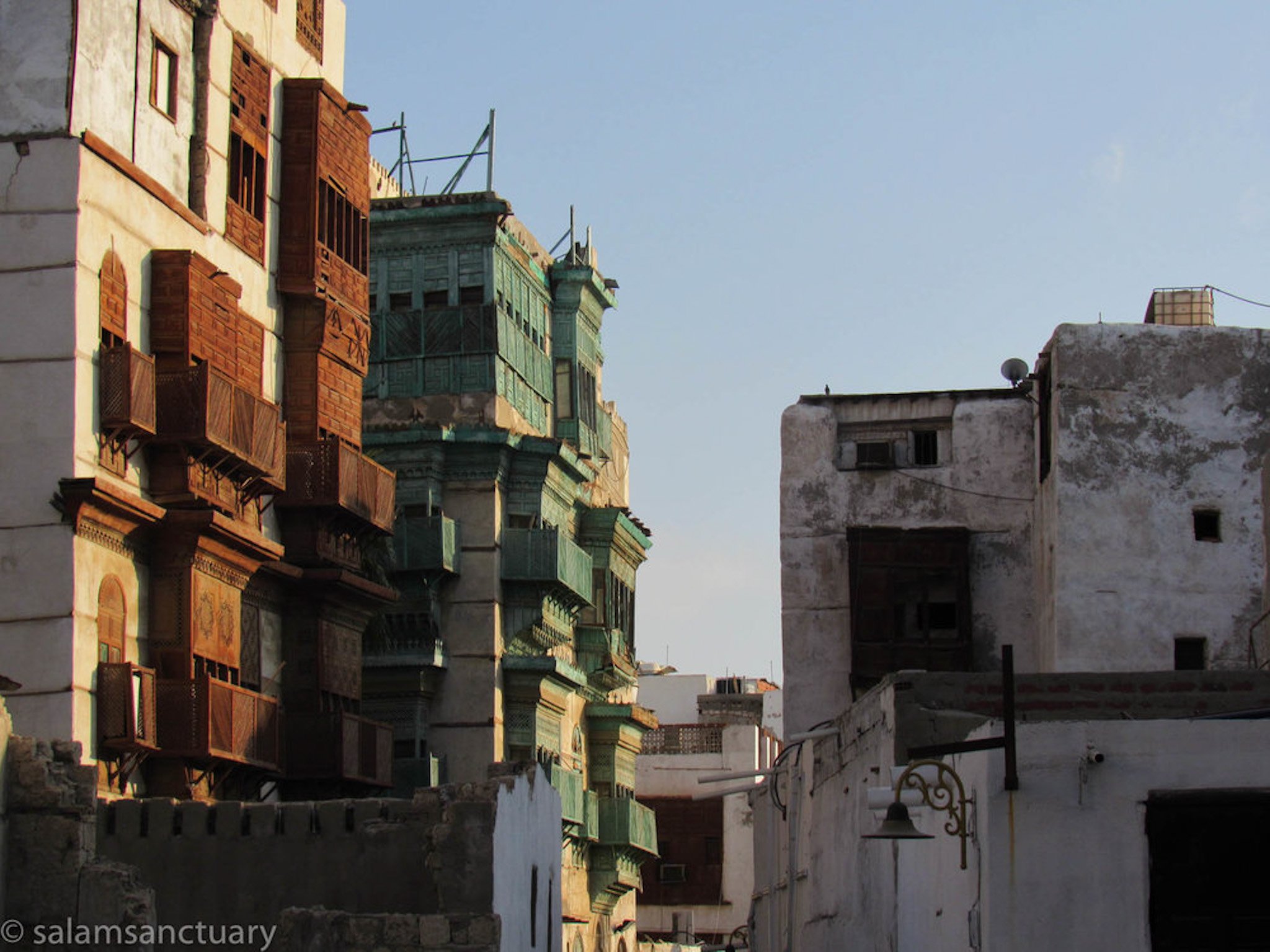Cultivating an art scene in Al-balad in Saudi Arabia
The five images in this blog post have been submitted for the World Nomads Travel Scholarship, wish salamsanctuary luck!
I grew up visiting Saudi Arabia at least 2 or 3 times a year and as a teenage girl, visiting Saudi was not somewhere I particularly enjoyed initially. Briefly, the conservative culture meant I wasn't allowed to go out much, my family were more indoor kind of people and many activities revolved around shopping centres. Being more of a free spirit seeking to be inspired and to explore, I began to do my own research to see what else I could possibly do to understand the Saudi city I am made to visit so often.
Saudi Arabia has changed a huge amount since, women can drive now, the city is a lot more open for tourism and so lots of changed have happened around this. In particular, I remember waiting a whole year for the Prince’s School of Traditional Art to finally open their branch in Jeddah. When they did, I immediately went to visit.. what I would find was not just an art school in a random location, but a beautiful historic area of Jeddah that I had not stepped foot in until 2015. It took my breath away.
Al-balad, Jeddah
UNESCO World Heritage Site Al-Balad is Jeddah’s preserved old Hijazi district that takes you back 100 years just by walking down the streets.
Jeddah is known as the Bride of the Red Sea or the Mermaid of the Red Sea. It is Saudi Arabia’s largest city and busiest seaport. It is also the gateway for pilgrimage to Mecca and Medinah.
The houses were made from coral and natural products from the sea. They didnt have cement or clay so they used layers of wood to stabilise the buildings.
Roshans and Mashrabiyahs, the wooden bay windows are symbols of the architectural heritage of the city. The Manjur pattern that can be seen in the pictures are the latticed wood, which helps bring in some light into the hijazi houses but also keep the shade and maintain a breeze - important in the hot Middle Eastern climate.
The high houses act as wind catchers, helping air circulation in the old city, but also protects and shades the streets from the hot sun rays. I was also told that the different colours link to which families lived inside, original wood or dark brown were the Saudi families, the green roshans were where Indian families lived and the blue roshans were where North African families resided.
Parquetry in Jameel House, Al-balad, Jeddah
Parquetry is the art and craft of applying different pieces of wood veneer to form geometric patterns, it starts by constructing the geometric pattern by paper and shading to the artists’ liking. Next the pattern goes on a piece of cardboard. Each segment of the pattern is numbered and gum arabic is used to stick the veneers separately onto each segment. A wet sponge is used to remove the the paper and gum arabic to reveal the parquetry pattern underneath. Watch my insta stories here!
Read more about Jameel House: https://artjameel.org/heritage/jeddah/
My finished piece alongside other attendees!











